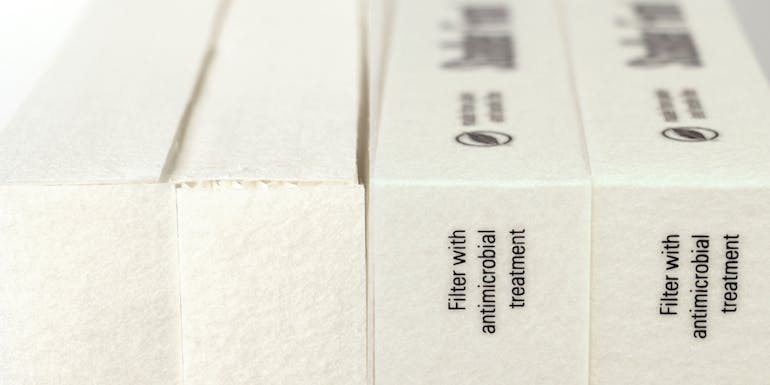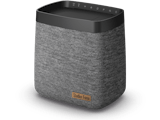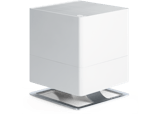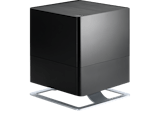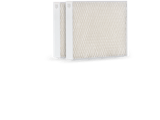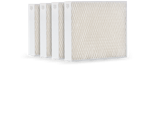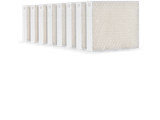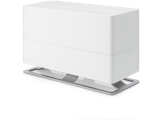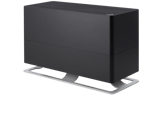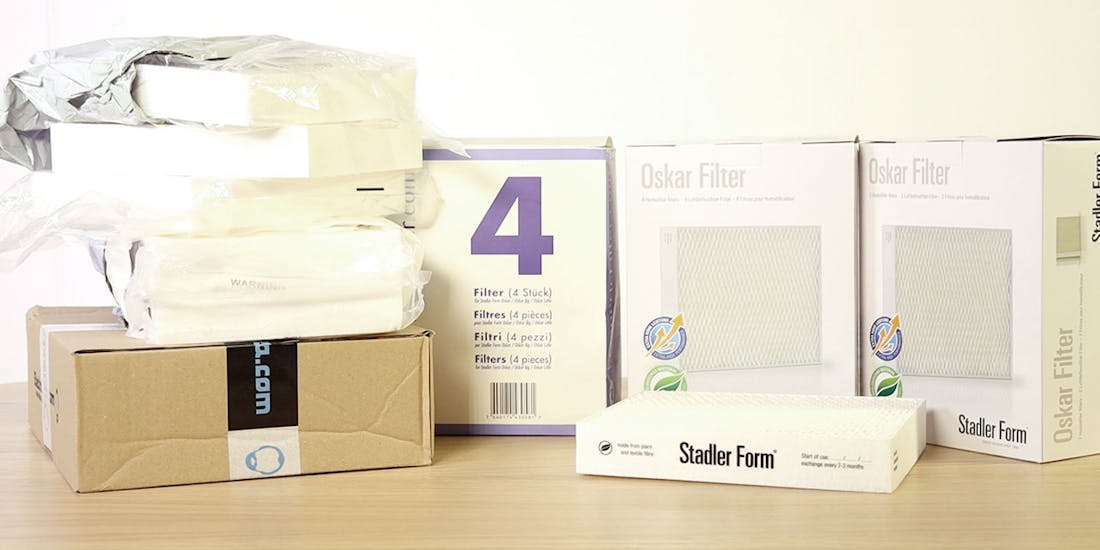
Nadine Walder, 14 February 2023
Humidify the air
Generic versus original filters – the comparison
When it comes to the efficiency of humidifiers, filters are a key important element. Not all humidifiers require filters but for those that do, the following applies: the better the filters, the more efficient and hygienic the humidifier will be. We tested the numerous generic filters on the market to find out whether they actually deliver on their promises and how they measure up to original humidifier filters.
Generic filters for humidifiers: how good are they really?
Our comparison revealed some interesting results. We tested the filters in respect of their dimensions, processing quality and efficiency (humidification performance). Samuel from Stadler Form sums up the findings from the test. Watch the video below or read on to find out what our comparison revealed.
Very clear-cut differences emerged between the generic and the Stadler Form original filters.
The key findings
- The generic filters are lighter than our branded filters which means that less filter material has been used.
- The generic filters do not always correspond to the original ones in terms of their dimensions. This variation in dimensions means that the fit is no longer guaranteed. With the Karl humidifier family, the generic filters literally have to be pressed in, for example. With the Oskar humidifier family, the top part no longer sits correctly and the generic filters do not cover the whole air intake opening. As a result, the air is sucked in from outside but directly into the inside of the humidifier rather than via the filters. Not all of the air goes through the filter which results in reduced humidification performance.
- There is also a significant difference between generic filters and original filters in terms of the processing quality. The finish of the frames of the generic filters is poor and too much adhesive is used to stick the frame to the filter material. The poor processing quality means that the filters are no longer stable and could collapse. As a result, the whole area for humidification is no longer available which in turn reduces the humidification performance. In addition, the material can come away from the filter, leading to contamination of the water.
And the most important point: the comparison showed that generic filters are 20% less efficient compared to our original filters. That means the same power consumption but reduced humidification performance in the case of the generic filters. Due to the inferior performance, a smaller area is humidified, it takes longer for optimal humidification to be reached and the humidifier cannot operate efficiently.
So what do we conclude from this?
All in all, the results are very sobering. On all the points we tested, the generic filters come out worse than our original filters. We constantly strive to improve our products and compare them with other products on the market. However in this case, the alternative with generic filters does not measure up. While they may be slightly cheaper than the original filters, they come out worse in terms of their price-performance ratio.
If you have questions related to indoor room climate, please get in touch with us. Or subscribe to our newsletter to regularly get informed about current topics regarding indoor climate, experience reports or Stadler Form insights.
